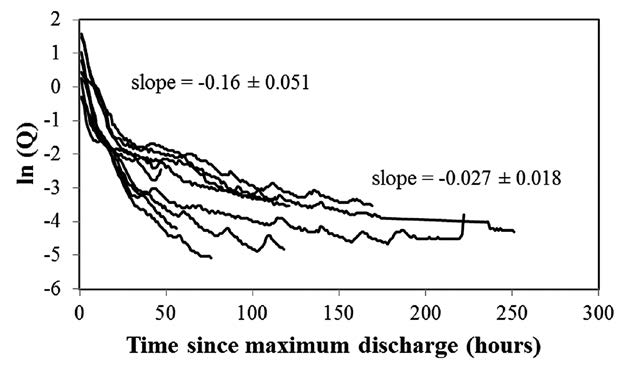Spring discharge records – a case study
DOI:
https://doi.org/10.3986/ac.v42i2-3.671Ključne besede:
Hydrograph, hydrology, karstPovzetek
Spring discharge records integrate of all the processes and the reactions occurring within a karst basin. A brief summary of the use of discharge records as a means to constrain the internal structure of karst basins, as means to constrain rainfall-runoff models for karst basin, and as a means to determine the value of hydrodynamic parameters of karst basins is presented. Data collected from Devils Icebox, a karst basin spring in Missouri, USA, were used to assess these approaches to characterizing karst basins. For Devils Icebox, most of the discharge responses do not record information about the internal structure of the basin rather the responses record information about the recharge to the basin. A rainfall-runoff model failed to reproduce the data from which model parameters were derived and has little utility in a predictive mode. Use of conservation of mass equations as a means to derive hydrodynamic parameters is a useful approach, although critical data are lacking. More generally, karst hydrologists need quantitative tracer data and long-term, high-resolution temporal data of the input(s) to and the output(s) from karst basins.
Keywords: Hydrograph, hydrology, karst.
Prenosi

Prenosi
Objavljeno
Kako citirati
Številka
Rubrike
Licenca
Avtorji jamčijo, da je delo njihova avtorska stvaritev, da v njem niso kršene avtorske pravice tretjih oseb ali kake druge pravice. V primeru zahtevkov tretjih oseb se avtorji zavezujejo, da bodo varovali interese založnika ter da bodo povrnili morebitno škodo.
Podrobneje v rubriki: Prispevki




